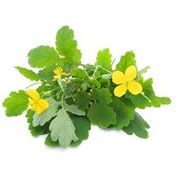
An effective treatment for athlete's foot. Fungus on the feet is a very common disease that, according to statistics, affects at least a quarter of all people on earth. The situation is aggravated by the fact that most people do not even suspect that they are carriers of the fungus, because it is both located and develops imperceptibly.
Mushrooms not only cause aesthetic and physical discomfort, but also synthesize toxins that can accumulate in the body and poison it. Therefore, it is very important to know how to prevent and fight this disease to protect your health. How do fungi affect the feet and what helps them?
Causes of foot fungus
Easy ways for parasitic fungi to penetrate the skin can be excessive sweating or, conversely, dry feet, any abrasions caused by wearing very narrow shoes, cracks and abrasions between the toes, which occur with poor wiping of the feet after water procedures. . In addition, various endocrine and vascular diseases, varicose veins, diabetes, flat feet, as well as decreased immunity or stress can lead to fungal infections.
The fungus is transmitted through close contact with the patient, through the items he uses - towels, clothes, shoes, clothes, manicure machines and even combs. Especially in this regard, common areas such as baths and swimming pools become dangerous. , because heat and humidity are ideal. conditions for the growth of the fungus. Once on the nail plate, which is almost entirely made of keratin, the fungus begins to grow and multiply slowly. Gradually it replaces the nail, dissolves it and begins to spread further to the surrounding skin. With a fungal infection, cracks and crusts form between the toes, followed by redness and itching of the skin.
Signs of foot fungus
The characteristic features of foot fungi are:
- darkening of the nail
- nail platinum becomes brittle and wears out
- the shape of the nail deforms itself
- pain in the tips of the toes
- bad smell
Therefore, in the first manifestations of a fungal infection, it is necessary to take urgent measures to combat the fungus to stop its further spread throughout the skin. If the fungus is not treated at all, it will spread from one nail to another and to closer areas of the skin, and in very advanced cases, even the internal organs are damaged.
If you doubt whether there is a fungus, then you can perform such a screening test at home: dilute the potassium permanganate crystals in warm water to make a purple solution. Dip your feet into it and hold for a while. The affected areas of the nail will remain exposed, and the unaffected areas will turn brown.
You can contact a dermatologist - a dermatologist, who will most likely send you for analysis - to scratch to determine the type of fungus, and then prescribe the necessary treatment.
Treatment of foot fungus with folk remedies
Using folk remedies, you can effectively treat fungus on the legs, especially if this treatment can be successful at the very beginning of the disease. In the past, when there were no such powerful antifungal drugs sold in a pharmacy, people managed and managed a fungal infection without using folk recipes:

- Treatment of foot fungus with onions. The easiest way to treat is onions. Peel an onion, grate it and squeeze the juice. Lubricate the affected areas of the feet. When the juice dries, there is no need to wash the feet, the procedure is best done before bedtime.
- Sea salt. A solution of sea salt will help cure the fungus for 10 days. Twice a day - morning and evening wash your feet in baths with sea salt (1 teaspoon in 1 glass of water). Then moisten the cotton wool in a saline solution, apply the cotton to the area affected by the fungus and keep until dry. Then wash your feet with baking soda (the proportion is the same as seaweed) and dry your feet.
- With garlic. A good effect is the treatment of foot fungus with a salt infusion of garlic. Prepare a solution of table salt (1 teaspoon of salt per 1 liter of water). Take 1 tablespoon of this solution and add 1 large clove of crushed garlic. Strain and squeeze with gauze, add 4 more tablespoons of salt to the resulting mixture. Lubricate the affected areas of the fungus with a solution prepared twice a day. Each time you need to prepare a fresh solution for treatment.
- Clay treatment. Clay is another helper for foot mycosis. Dilute the clay powder (sold in pharmacies) with cold water to a thick creamy consistency and apply a thick layer on the affected areas, wrap with a linen cloth. Before the clay dries, remove the bandage and then rinse your feet with lemon solution (1 tablespoon lemon juice in 1 glass of water). Clay lotions should be prepared at least 2 times a day, preferably 3 times, each time with a new portion of clay.
- Celandine juice. In the summer, if celandine grows in your country house, then you can use the juice of this plant, because it has a strong antifungal effect. The plant should be uprooted, immediately orange juice will appear on it, and lubricate the affected areas with it. Just keep in mind that the procedure is not very unpleasant, itching will be felt, but the juice will pass as if absorbed. After a few minutes, re-lubricate the area with juice and do it 3-4 times. The procedure should be repeated twice a day for a month. In addition, you can prepare celandine oil for yourself, which can be used all year round against foot fungus, and not only in the summer when this plant blooms.
- Treated with celandine compresses. If you have dry celandine grass, powder it and mix it with tea tree oil to make a thick emulsion. Apply as a compress to the affected areas of the feet daily. Do this until the old mushroom nail comes out and a new one grows in its place.
- Propolis. Alcohol tincture of propolis is an effective and affordable remedy against fungi, you can always buy it at a pharmacy. Propolis, which has antipruritic, anti-inflammatory, bactericidal, restorative and anesthetic effects, is harmful to the fungus. Moisten a cotton swab with 20% propolis tincture and apply to the affected area, wrap your feet in polyethylene and cover everything with a bandage, the procedure is best done at night. After about a month of treatment, the nail affected by the fungus will come out and a new one will grow in its place.
- Apple cider vinegar. Apple cider vinegar is another effective remedy for foot fungus, lubricate the affected areas several times a day and the fungus will be withdrawn. You can do this, for example, by sitting in front of the TV and watching your favorite show. Apply to problem areas of the feet with a cotton swab moistened with apple cider vinegar and then replace with a new one when it dries. Over time, the fungus on the feet will go down.
- Herbal balm. You can prepare a healing antifungal herbal balm: pour 0. 5 liters of sunflower oil into an enamel bowl and add 1 tablespoon of chopped dried herbs: mint, butter and golden root (Rhodiola rosea). Put on a low heat and heat, but not more than 65 degrees. Turn off the oven and infuse for 12 hours, strain. Add a solution of vitamins A, E and D to the balm, add 1 tablespoon to each, mix everything and lubricate the affected areas with balm at least twice a day. The balm should be stored in the refrigerator, the shelf life is not more than six months.
- Maple resin. Maple resin sold in pharmacies is one of the strongest enemies of foot fungi. After the shower, lubricate the affected areas on the toes and nail plates each time and do not wash after that. After a few such procedures, you will not even notice how the fungus disappears without a trace. Personally, this method helped me a lot to cope with the foot fungus that I once took when visiting the pool.


If you have a fungus in your family, you should take precautions to prevent infection.
- The patient should not walk barefoot at home until the fungus is cured, and should sit with their feet on a sofa or chair.
- Before taking a bath, it should be thoroughly washed with any liquid product containing chlorine that kills fungi.
- Scissors, nail files and other items for pedicures and manicures should be wiped with alcohol.
- If the fungus is found in one of the spouses, she should sleep in clean, ironed cotton socks and change the bedding every week.
- Be sure to treat the inside of the shoes with apple cider vinegar, 40% acetic acid or formalin solution.
Prevention of foot fungus
- Never wear someone else's shoes and when visiting - the slippers offered to you. It is better to change shoes with yourself or go to the room in socks.
- In the cold season, always change your shoes with changeable shoes, do not allow your feet to overheat, because the fungus starts to attack when your feet sweat.
- When visiting the solarium, swimming pool, sauna, bath or therapeutic baths in the sanatorium, do not forget to take rubber slippers with you. Pour hot water on the bench and pool in the bathroom, put a sheet or towel on the shelf, only you can lie down on them.
- Do not walk barefoot in hotels, locker rooms, train compartments and other public places, as well as on the unpaved beach. The last resort is no longer, it is a breeding ground for fungal infections in moist hot sand, hiding scales and nail pieces infected with many fungi.
- Replace bath and shower mats with cloth and sponge rubber. The folds remain moist, the skin flakes and nail pieces stick, and the rubber mat can always be easily washed off with warm water.
- After taking a shower or bath, wipe your feet thoroughly until they are dry, and especially carefully between your toes, so that there is no moisture left, and at the same time a chance of fungus settling.
- Change your socks, stockings or tights every day. Do not allow anyone to temporarily use files, manicure tools, sponges, detergents.
- Do not wear the same shoes for more than two days in a row. Allow to dry properly during the day.
- When buying shoes, never try to wear them barefoot.
- Monitor the condition of your feet, take proper care of your feet - take timely measures for sweating, dryness, calls, prevent cracks in your feet.
- However, if you suspect you may catch a fungus when you go to the pool or beach, then when you get home, wipe your feet with a cotton swab dipped in a 6% solution of table vinegar or wash your feet. with tar soap.
Follow these precautions, remembering that prevention is always easier than cure.





























